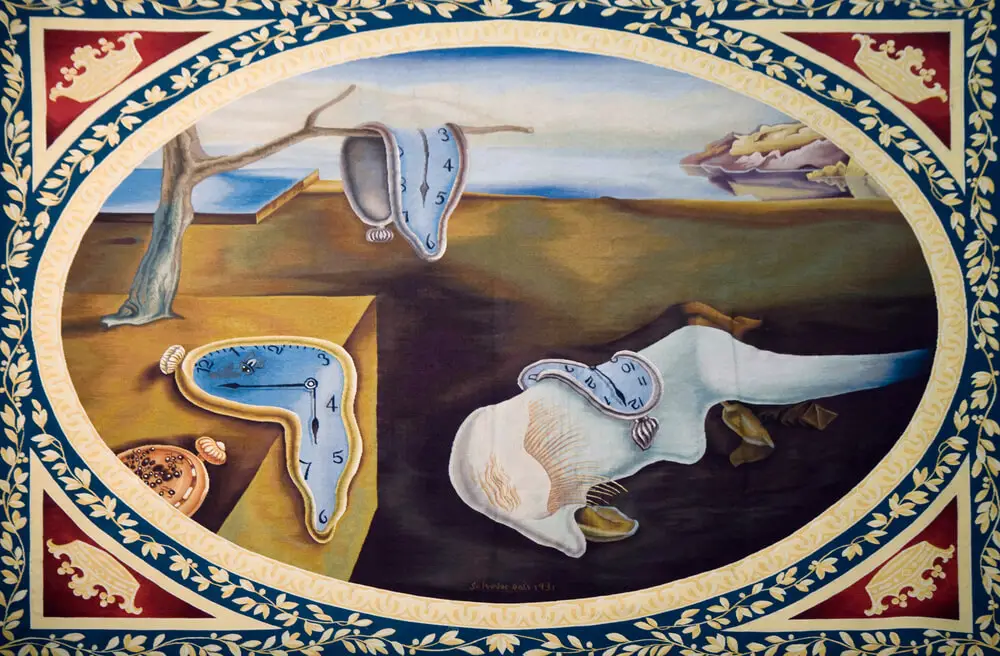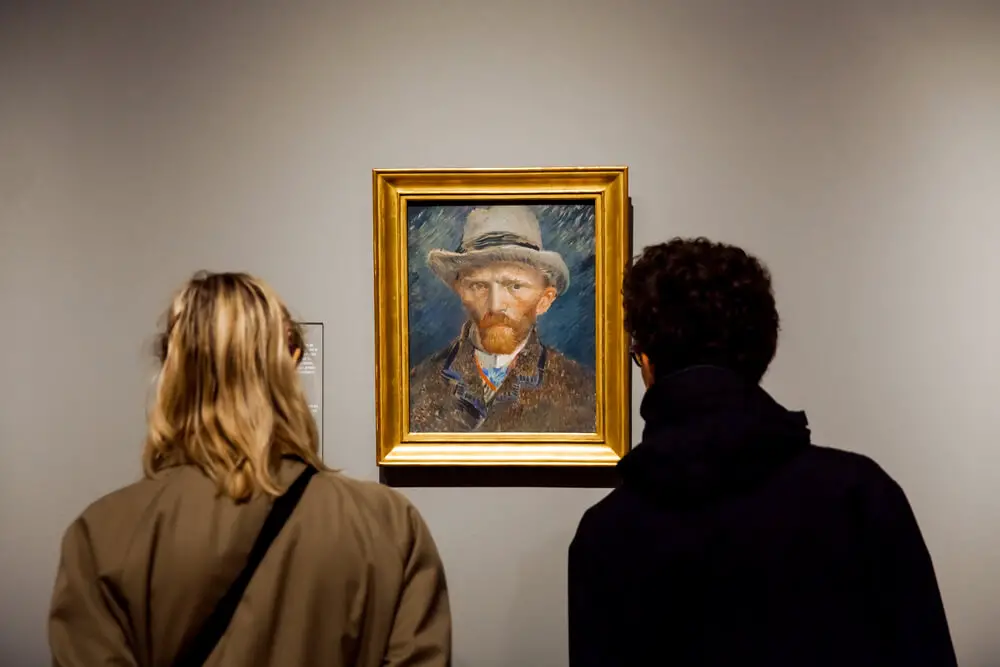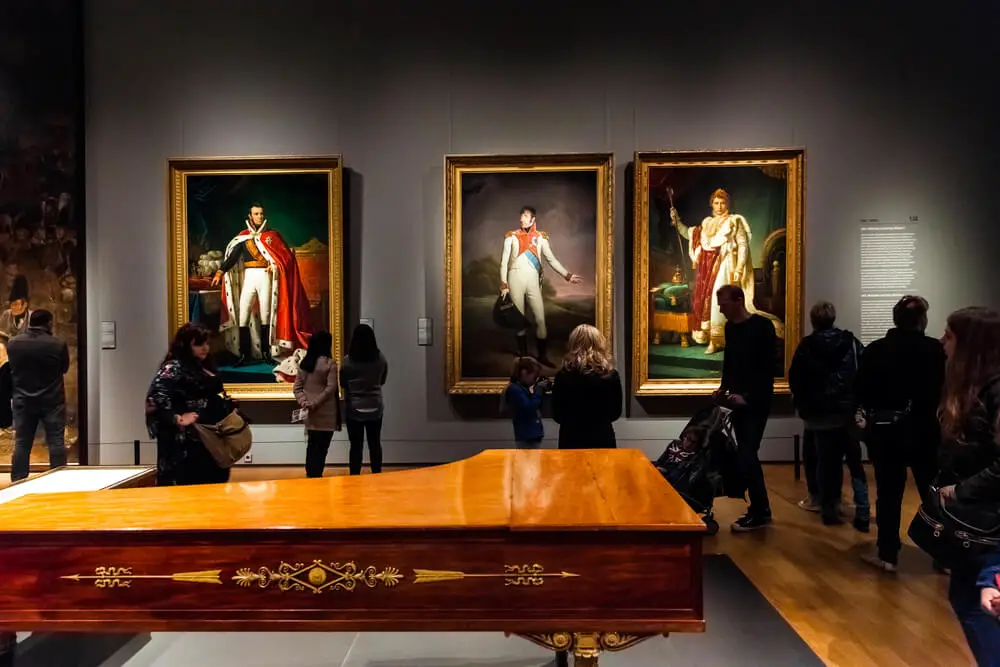Oil paintings have long been regarded as valuable works of art, often commanding high prices in the art market.
But why are oil paintings so expensive? Their intrinsic value can be attributed to several factors, including the historical importance of oil painting as an art form, the materials and techniques used, and the time-consuming process involved in creating an oil painting.
In addition to the intrinsic factors, the art market itself plays a significant role in pushing up the prices of oil paintings.
The perceived value of an artist and their reputation can have a strong influence on the price of their work.
Further, oil paintings are often seen as secure, long-term investments, as they typically appreciate value over time. This further contributes to the high demand for and steep prices of oil paintings.
Key Takeaways
- Oil paintings are expensive due to their historical significance and the materials and techniques used.
- The perceived value of an artist and their reputation influence the artwork’s price.
- High demand for oil paintings as a long-term investment contributes to their elevated prices.
Why Are Oil Paintings So Expensive

The Renaissance Influence
I believe the Renaissance period played a significant role in shaping the art world, especially in terms of oil paintings.
This era, spanning from the 14th to the 17th century, marked a time of renewed interest in arts, culture, and creativity. As a result, numerous renowned artists emerged, embracing oil paints as their preferred medium.
Their innovative techniques, combined with the rich, vibrant colors and textures of oil paints, allowed for an unprecedented level of detail and realism in their works.
Some of the most iconic pieces in art history were created using oil paints, such as Vincent van Gogh’s “Starry Night” and Leonardo da Vinci’s “Mona Lisa.”
Their lasting impact on the world of art and culture is a testament to the transformative power of oil paintings during the Renaissance period.
Famous Oil Paintings
- Vincent van Gogh – Starry Night: This iconic oil painting captures a dreamy night sky filled with swirling celestial bodies. Van Gogh’s unique brush technique and color choices create a powerful, timeless image that remains one of the most famous oil paintings in history.
- Leonardo da Vinci – Mona Lisa: As one of the most recognized artworks in the world, the Mona Lisa stands out due to da Vinci’s masterful use of oil paints and the subject’s enigmatic smile. The intricate details and subtle shading techniques showcase the true potential of oil paints, solidifying the painting’s historical significance.
The historical importance of oil paintings can be traced back to their prominent role during the Renaissance, as well as their enduring presence in the works of many iconic artists.
Their unique qualities contribute to the high value of such paintings, making them a significant part of our artistic and cultural heritage.
Materials and Techniques in Oil Painting

The Canvas
In oil painting, I prefer using a high-quality canvas made from either linen or cotton. Both materials have their own advantages: linen canvas is stronger and more durable, while cotton is more affordable.
I typically prime my chosen canvas with a layer of gesso to ensure the paint adheres properly and to prevent the oil from seeping into the canvas fibers.
This step is important, as it makes the canvas less susceptible to rot and discoloration over time.
The Pigments of Oil Paints
When it comes to oil paints, the main components are pigment and linseed oil. Pigments are powdered substances that provide color, while linseed oil acts as a binder to hold the pigment particles together and create a thick, viscous paint.
Interestingly, pigments can vary significantly in quality and cost, which is why some colors are more expensive than others.
I often find it fascinating to research the history and origin of each pigment, as this enhances my appreciation for the medium.
Compared to acrylic and watercolor, oil paints offer a richer, more vibrant color palette that can retain its texture and luminance for centuries.
This is partly because oil paints dry more slowly, allowing me to blend and mix colors directly on the canvas, yielding rich tones and smooth gradients.
Brushes and Blending
Selecting the right brushes for oil painting is crucial to achieving the desired texture and blending effects.
Since oil paints are thick and heavy, I use brushes made from stiffer fibers, such as hog hair or synthetic alternatives. These brushes are more durable and maintain their shape longer when working with oil paints.
Blending is a key technique in oil painting, enabling me to create seamless transitions between colors and build up layers of paint.
This process requires patience and skill, as blending oil paints differs from blending water-based mediums like acrylics or watercolors.
With oil paints, I have more time to manipulate the paint on the canvas, but it’s essential to know when to stop, as overworking can lead to muddy colors and a damaged canvas surface.
In conclusion, the cost of oil paintings can be attributed to the materials and techniques used, from the canvas and pigments to the brushes and blending.
By understanding their complexities and appreciating the craftsmanship involved, one can truly appreciate why oil paintings are such a treasured and sought-after art form.
The Process and Time Investment

Creating A Masterpiece
As an artist, I can attest that creating an oil painting requires a great deal of time, patience, and effort.
To produce a masterpiece, one must start by preparing a suitable canvas, which involves stretching and priming the material. This step sets the foundation for a stable and long-lasting work of art.
Once the canvas is ready, I begin the painting process by carefully selecting the right colors. Mixing oil paints to achieve the desired hue can be time-consuming and requires experience.
During the actual painting process, I must also work meticulously, making calculated brushstrokes to ensure the final piece is visually stunning and cohesive.
Drying and Workability
The drying process of oil paintings plays a crucial role in their workability and value. Unlike watercolor or acrylic paintings that can dry within hours, oil paintings can take days or even weeks to dry completely.
This slow drying process allows me to continue working on my painting, making adjustments and blending colors as needed over extended periods.
However, this also means that I must plan my work carefully, as adding new layers of paint can be tricky. If not done correctly, the painting can become damaged, or the colors may not adhere well to the canvas.
The time, investment, and effort involved in creating an oil painting, along with the unique characteristics of the medium, contribute to their high value and esteemed status in the world of art.
The Art Market Economics

Pricing and Auction Houses
In the art market, auction houses play a significant role in determining the value and cost of oil paintings.
I’ve observed that prestigious auction houses, such as Sotheby’s and Christie’s, heavily influence the art market by establishing the perceived value of artworks.
They achieve this by setting high price estimates, which are often based on factors such as the artist’s brand, the artwork’s historical significance, and its rarity.
Auction houses typically operate on a global scale, attracting high-profile collectors and buyers from wealthy nations and regions, such as the Gulf States and Qatar.
The luxury aspect of the art market ensures that oil paintings are often treated as valuable commodities, further boosting their prices.
Supply and Demand
As an art enthusiast, I’ve noticed that the economics of supply and demand also play a crucial role in the high cost of oil paintings.
For instance, when there’s a limited supply of an artist’s work, the demand increases, leading to a spike in the market value.
This is particularly true for renowned artists whose works are scarce or those who are no longer creating new artworks.
Additionally, oil paintings are challenging and time-consuming to create, which adds to their perceived value.
Unlike digital art or photography, which can be mass-produced, oil paintings require skilled craftsmanship, unique materials, and meticulous attention to detail.
This dynamic of supply and demand in the art market ensures that oil paintings continue to fetch high prices, making them expensive for collectors and art lovers alike.
High Demand for Oil Paintings

Famous Artists
In the art world, oil paintings have always held a special place due to their rich colors, flexibility, and durability.
It is no surprise that the works of renowned artists like Pablo Picasso and Rembrandt are highly sought after by collectors, galleries, and museums.
This high demand for their creations is in part due to the scarcity of their works, which only serve to increase their value.
As an outcome, collectors are willing to pay astronomical prices for these rare pieces as they are considered sound investments.
Furthermore, the recognition that these famous artists garner elevates their works’ perceived value in the eyes of collectors, leading to an even higher demand.
Their influence transcends boundaries, and their art is known, respected, and appreciated globally.
Galleries and museums, on the other hand, desire to have these pieces in their collections to attract visitors and become reputable destinations in the art world.
Lesser-Known Artists
Lesser-known artists also play a significant role in the high demand for oil paintings.
These artists may not have the same level of recognition as Picasso or Rembrandt, but they bring their unique perspectives and techniques to the table, making their artworks valuable for collectors who appreciate diversity and novelty. Moreover, the scarcity of works by lesser-known artists contributes to their value.
As collectors, galleries, and museums seek to expand their collections with original and provocative pieces, they are willing to pay top dollar for emerging talents and rare gems by lesser-known creators.
This increased interest in their art promotes healthy competition among collectors, driving up prices and further contributing to the high demand for oil paintings.
In conclusion, the high demand for oil paintings in the art world can be attributed to both the exceptional works of renowned artists and the artistic potential of lesser-known creators.
The scarcity of these paintings only serves to amplify their allure, making them valuable commodities for collectors, galleries, and museums alike.
Perceived Value and Artistic Reputation

Quality and Craftsmanship
In my experience as an art enthusiast and collector, I have come to understand that the perceived value of oil paintings is strongly influenced by their quality and craftsmanship.
Artists spend countless hours perfecting their technique, and the intricacies of their work can greatly impact the final product.
High-quality oil paintings demonstrate an artist’s commitment to their craft and showcase their unique talent.
When we see a magnificent oil painting, like those displayed in famous art galleries, we can’t help but appreciate the skill and effort put into the creation process.
Collectors, such as Steve Wynn, often invest in artwork because it serves as a testament to its creator’s reputation and ability.
The higher the quality, the more likely it is to create a sense of prestige and importance for both the artist and the owner.
Art Education and Knowledge
As a connoisseur of fine arts, I have also noticed the impact of art education and knowledge on the perceived value of oil paintings.
The more one learns about art history and the creative process of various artists, the more appreciation and respect they tend to have for the artwork.
This understanding can lead to a higher demand for specific oil paintings or artists, thus increasing their value in the market.
Knowledge about art also plays a crucial role in shaping our perception of an artist’s reputation. By learning about the life, struggles, and successes of an artist, we gain insight into the story behind their work.
This deeper connection can make collectors more willing to pay higher prices for pieces that resonate with them on a personal level.
To sum up, the perceived value and artistic reputation of oil paintings depend largely on their quality, craftsmanship, and the knowledge and education of those who appreciate and collect them.
In the world of art, these factors are paramount in determining the worth of a masterpiece, both financially and emotionally.
Oil Paintings as a Long-Term Investment

In my experience, oil paintings are a sought-after form of artwork largely due to their potential as a long-term investment.
The high costs associated with purchasing an oil painting can be attributed to several factors, which ultimately contribute to their potential to appreciate in value over time.
First, the materials used in oil paintings, such as canvas and pigments, are more expensive than those used in other art forms like watercolors or acrylics. This naturally elevates the overall cost of the finished product.
Second, the painstaking process of creating an oil painting often requires a significant amount of both time and skill.
There is a clear correlation between the hours invested by an artist and the value of their artwork.
Consequently, oil paintings with intricate details and time-consuming techniques generally command higher prices.
Additionally, the longevity of oil paintings sets them apart as a long-term investment. Properly cared for, an oil painting can last hundreds of years, if not longer.
This makes them particularly attractive to collectors who value artwork that will withstand the test of time.
Finally, the art market itself has a history of significant appreciation. While investing in art can be risky, many collectors have successfully managed to make a significant return on their investment by carefully selecting and investing in high-quality oil paintings over the years.
To summarize, oil paintings are often seen as a long-term investment due to their high costs, inherent longevity, and potential for appreciation within the art market.
As a result, collectors and investors are often inclined to favor oil paintings in their collections.
Conclusion
In my experience, oil paintings are expensive for several reasons. Firstly, the materials used in creating these artworks – such as high-quality pigments and canvases – are often pricey.
The time and skill required to produce an oil painting also contribute to its value. Furthermore, the status and reputation of the artist can significantly affect the artwork’s price.
Some may argue that the cost of oil paintings is justified because they are a unique, one-of-a-kind creation that cannot be replicated in the same way that prints can be.
In addition, the intricate techniques and the depth of color achievable with oil paints can result in a stunning, long-lasting piece of art.
It’s essential to remember that while oil paintings can be expensive, their value boils down to the quality of materials, the artist’s skill, and potentially the artist’s reputation.
As a buyer, it’s crucial to weigh these factors when considering the acquisition of a piece of art.
By recognizing the elements that contribute to a painting’s worth, you can better appreciate and evaluate the intricacies of this beautiful art form.
Frequently Asked Questions
What factors contribute to the high cost of oil paints?
There are various factors that contribute to the high cost of oil paints. For one, the raw materials used in their production, such as pigments and binders, can be quite expensive.
Additionally, the manufacturing process requires significant time and skilled labor to ensure the quality and consistency of the final product.
Some famous and rare pigments, like genuine Lapis Lazuli, can significantly increase the cost due to their scarcity.
How does the production process affect the price of oil paints?
The production process of oil paints involves grinding pigments and mixing them with a binder, usually linseed oil, to create a smooth and creamy consistency.
This process can be labor-intensive and time-consuming, especially if the paint is handmade, resulting in a higher cost.
Also, ensuring the paint’s quality by removing impurities and thoroughly dispersing the pigment can add to the overall expense.
Do materials used in oil paints justify their higher cost?
In my opinion, the materials used in oil paints do justify their higher cost. The pigments used in oil paints are often of higher quality than those found in acrylic or watercolor paints, which can result in more vibrant and longer-lasting colors.
Further, the oil binder allows the paint to remain workable for an extended period, providing greater flexibility for artists to blend and create unique effects. Lastly, oil paintings generally that age well can retain their original luster for centuries, making them a valuable investment.
Why do oil paintings typically have a higher value than acrylic paintings?
Oil paintings tend to have a higher value than acrylic paintings for a few reasons. The history and tradition of oil painting, which dates back to the Renaissance, adds to the prestige and perceived value of the medium.
Oil paintings can take longer to create due to their extended drying times and techniques, which can contribute to their overall value.
The rich and luminous quality of oil paints also sets them apart, along with their longevity and durability.
How does the price of oil paints impact the artwork’s overall cost?
The price of oil paints can significantly impact the overall cost of an artwork. High-quality oil paints can be expensive, and as a result, artists may need to charge more for their pieces to recoup material costs and fairly compensate themselves for their time and labor.
Nevertheless, the higher cost of oil paints can also be an investment, as they often result in more visually striking, lasting, and valuable artwork.
Is there a notable difference in quality between affordable and expensive oil paints?
There is a notable difference between affordable and expensive oil paints in terms of quality. While affordable oil paints may be suitable for beginners or those on a tight budget, they often contain lower-quality pigments and binders, which can affect their color intensity, texture, and longevity.
On the other hand, more expensive oil paints contain premium ingredients and have gone through rigorous production processes, resulting in a superior product with greater vibrancy and longevity.
Ultimately, the choice between affordable and expensive oil paints will depend on the individual artist’s needs and preferences.


















